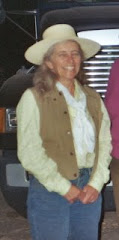Horseshoeing with iron shoes and nails dates back to the year 500 and before that plant parts and animal skins may have been used to protect the horse's feet. My point is that farriers have been providing hoof care for centuries; before x-rays, radiographs, ultrasound, shock wave, and other modern technology available today to diagnose and treat lameness. True we have been able to help horses return to soundness with these techniques, but what is fluff and what really is the key to sound horses and how do farriers play a part. Historians record that Nero had his horse shod with silver and his wife’s with gold. I am sure his horses were sound, but I highly doubt it was because of the special shoes.
So much rides on the hoof, that at times I feel many things are blamed on the condition of the hoof. Horse owners and veterinarians are quick with trimming or shoeing technique suggestions. But do they really factor in age, diet, breed, use, stalling conditions, bone structure, confirmation, etc? As a farrier, I love the advancements of the industry and the science involved to improve the condition of the horse through hoof management. However, I find that when a horse is “off” and no one has any real idea then “it must be the toe is too long”, “the horse has been trimmed too short”, “the shoe is too long”, “the shoe is resting on the sole”, “the sole at the wall needs to be part of the support”, “the angle is too steep”, “the angle is too low”, “if we give him heel support”, “pad the shoe”, “go barefoot”, ….you get my point. Sometimes even when the problem is found to be in the hock or the knee, etc it still gets blamed on the condition of the hoof. Because the applications of various shoeing/trimming techniques often help, it seems when in doubt blame the farrier.
When in reality a balanced foot, properly prepared for the activity of the horse remains the bona fide job of the farrier. Of course, knowledge of the numerous modern ways and means of acquiring this in a lame horse does help to perfect a balanced hoof. But all knowledge is not of equal value, some things are just interesting to know, but anything you learn needs to be applied wisely to be of value. So my question is, what else is going? Why does the unknown always get directed to the foot?
I love my job, it has become advanced, yet, as evident as the soundness of horses have been through the centuries before modern science, it really shouldn’t be complicated. I believe even when using these advances it still all comes down to trimming the horse to be balanced in stance, as well as, in motion.
Thursday, December 31, 2009
Tuesday, December 22, 2009
Christmas
What is the meaning of Christmas?
1. To send out greeting cards and keep in touch? “Do not forsake the fellowship with others.” Hebrews 10:25
2. To Party, Party, Party and eat and drink some more? “There is nothing better for a man than to eat, drink, and tell himself that his labor is good.” Ecclesiastes.
3. To take a day off (or more) from work? “So there remains a Sabbath rest for the people of God” Hebrews 4
4. To celebrate the winter solstice? “The heavens declare the glory of God” Psalm 19
5. To give food, clothes, and toys to the needy? “if I give all my possessions to the poor, but do not have love, it profits me nothing” I Corinthians 13
6. To celebrate the birth of Jesus? “I bring you good news of great joy which will be for all the people; for today in the city of David there has been born for you a Savior, who is Christ the Lord” Luke 2
You pick.
But I’ll give you a hint….all the answers are in the Word…”and the Word became flesh and dwelt among us.” John 1
Yup, you’re right! Jesus is the answer for the world today.
Merry Christmas to all!!
1. To send out greeting cards and keep in touch? “Do not forsake the fellowship with others.” Hebrews 10:25
2. To Party, Party, Party and eat and drink some more? “There is nothing better for a man than to eat, drink, and tell himself that his labor is good.” Ecclesiastes.
3. To take a day off (or more) from work? “So there remains a Sabbath rest for the people of God” Hebrews 4
4. To celebrate the winter solstice? “The heavens declare the glory of God” Psalm 19
5. To give food, clothes, and toys to the needy? “if I give all my possessions to the poor, but do not have love, it profits me nothing” I Corinthians 13
6. To celebrate the birth of Jesus? “I bring you good news of great joy which will be for all the people; for today in the city of David there has been born for you a Savior, who is Christ the Lord” Luke 2
You pick.
But I’ll give you a hint….all the answers are in the Word…”and the Word became flesh and dwelt among us.” John 1
Yup, you’re right! Jesus is the answer for the world today.
Merry Christmas to all!!
Subscribe to:
Posts (Atom)
